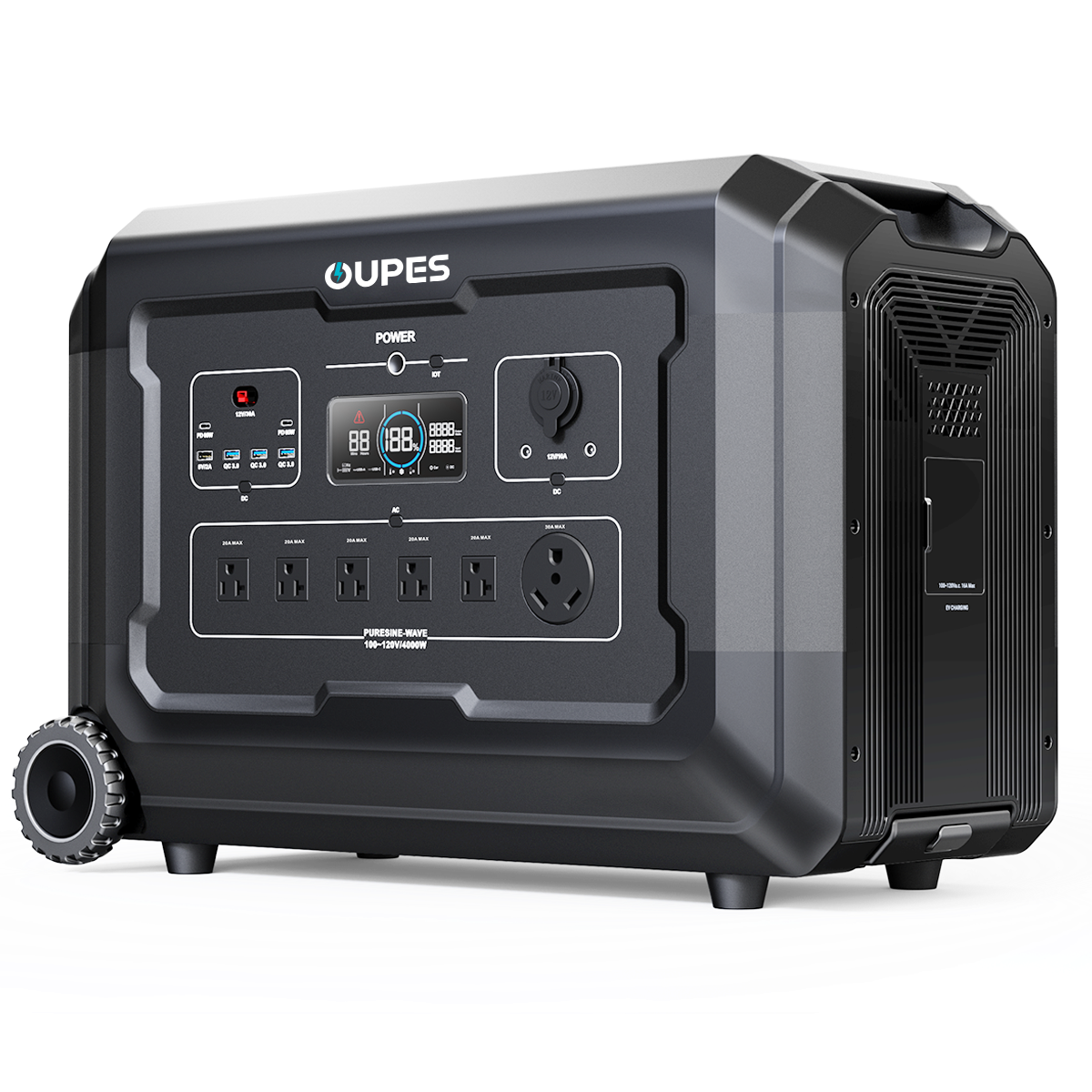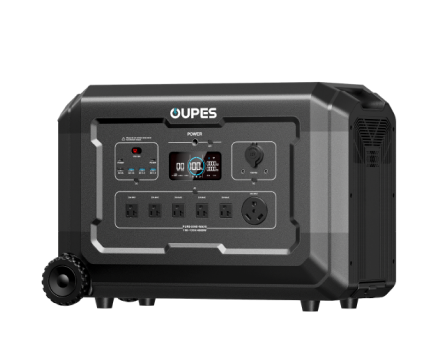
When the power goes out unexpectedly, one of the first concerns people have is what will happen to the food stored in their freezer. While a short outage might not cause much harm, longer ones can create dangerous conditions where once-frozen food starts to spoil. Knowing what to keep and what to throw away is essential for both your health and your budget. This guide will walk you through everything you need to know about evaluating your freezer's contents after a power outage, and how to keep your food safe in the future.
Whether you've experienced a storm-related blackout or a grid failure, the question of food safety remains the same: can you trust what's inside your freezer? By the end of this article, you'll have a clear understanding of how to make the right choices, prevent waste, and prepare for the next outage with practical strategies.
How Long Can Food Stay Safe In The Freezer Without Power?
The length of time food remains safe in your freezer during a power outage depends largely on whether the freezer door is kept shut. A full freezer, if left unopened, can typically keep its contents frozen for about 48 hours. A half-full freezer can do so for roughly 24 hours. This is because a packed freezer has less empty air space, allowing it to retain cold temperatures for longer. However, every time the freezer is opened, cold air escapes and accelerates thawing, so minimizing access is critical.
Another factor that impacts food safety is the quality of your freezer insulation. Older freezers may not hold cold temperatures as well as newer models. Additionally, the temperature of the room in which the freezer is located can influence how quickly food thaws. A freezer stored in a hot garage during the summer may warm much faster than one in a cool basement. These details matter when assessing how long your food may remain safe.
It's important to note that while frozen food can remain safe for a day or two, once thawed, the clock starts ticking. Perishable foods like meat, poultry, seafood, and dairy are especially vulnerable to bacterial growth once their internal temperature rises above 40°F (4°C). If the power outage lasts longer than a day, you should be cautious about assuming your freezer contents are still safe.
One way to prepare for future outages is by keeping an appliance thermometer in your freezer. This allows you to check the internal temperature without guessing. If the thermometer reads 40°F or higher for two hours or more, it's safest to discard most perishable foods. Understanding these timeframes and monitoring temperatures can give you confidence when making decisions after a blackout.
Foods You Should Discard Immediately After A Power Outage
After an extended outage, some freezer items should be discarded without hesitation. These are the high-risk foods that can quickly become unsafe once thawed. Any raw or cooked meat, poultry, or seafood that has been exposed to temperatures above 40°F for more than two hours should be thrown out. Even if they smell fine or appear unchanged, bacteria such as Salmonella and E. coli can grow rapidly under these conditions, making them unsafe to consume.
Dairy products such as milk, soft cheeses, yogurt, and ice cream should also be discarded if thawed and warm. These foods are highly perishable and spoil quickly without proper refrigeration. Similarly, frozen prepared meals or casseroles containing eggs, cheese, or meat are unsafe once thawed. Attempting to refreeze these items will not kill any bacteria that may have developed during the thawing period.
Seafood deserves special mention due to its high sensitivity to temperature changes. Fish and shellfish spoil rapidly and should never be eaten if thawed and left at unsafe temperatures. In addition to health risks, spoiled seafood can emit toxins that cooking cannot eliminate. For your safety, it's always best to err on the side of caution with these items.
Another commonly overlooked item is ice cream. While it may be tempting to refreeze it after it melts, its texture and quality are ruined, and bacterial growth can occur. Ice cream that has melted and refrozen can also form ice crystals, making it unpleasant to eat. For both health and quality reasons, melted ice cream should be thrown out after a power outage.
Foods That May Still Be Safe To Keep
Not everything in your freezer needs to go into the trash after an outage. Some foods can remain safe if they are still partially frozen or if their temperature has stayed below 40°F. Hard cheeses, butter, bread, and plain frozen fruits and vegetables can often survive thawing without becoming hazardous. These foods are less prone to bacterial growth and can usually be refrozen if they still feel cold to the touch.
Packaged juices, baked goods like muffins or cakes, and certain condiments may also be safe after thawing. Their lower moisture content and higher acidity levels make them less favorable environments for bacteria. While the texture of some items might change after refreezing, they are still safe to consume. For example, frozen fruit may lose firmness but can still be used in smoothies or baked goods without issue.
Vegetables that have been cooked prior to freezing may also be refrozen if they still contain ice crystals. The key is whether or not they have reached unsafe temperatures. Always check for signs of spoilage, such as off smells, slimy textures, or discoloration. If in doubt, it's better to be safe than sorry. Trust your senses, but prioritize safety above salvaging food.
In general, if food still contains ice crystals or feels as cold as it did in the freezer, it can be safely refrozen. However, quality may decline. Bread might become dry, and vegetables could become mushy. It's important to weigh the balance between safety and food quality when deciding what to keep.
Tips To Prevent Food Waste During Power Outages
While power outages are sometimes unavoidable, there are steps you can take to reduce food loss. First, keep your freezer full. A fully packed freezer holds cold temperatures longer than a half-empty one. If you don't have enough food to fill it, consider placing water bottles or ice packs inside to take up extra space. These frozen items will help maintain low temperatures and can serve as emergency drinking water once melted.
Another strategy is to group foods together. By keeping similar items in clusters, you reduce the number of warm air pockets that form when the freezer door is opened. Avoid frequently opening your freezer during an outage. Every minute the door remains shut helps preserve cold air inside. It's best to plan ahead by deciding what you might need before opening the freezer, so you minimize the loss of cold each time.
Investing in a portable power station, such as those from OUPES, can be a lifesaver. These devices can keep your freezer running during a blackout, protecting your food and reducing waste. Depending on the model, a power station can provide hours of backup power for essential appliances. Pairing a power station with solar panels gives you even greater resilience, ensuring that extended outages don't compromise your food safety.
Lastly, consider making an inventory of your freezer. Knowing exactly what's inside allows you to make quick decisions during a power outage, minimizing time spent with the freezer door open. Labeling and dating foods before freezing can also help you keep track of freshness, so you avoid confusion when deciding what to keep or discard.
How To Safely Handle Food After Power Is Restored
Once the power is restored, it's important to carefully evaluate your freezer contents before consuming anything. Start by checking the internal temperature with a thermometer if possible. If it reads above 40°F, perishable items should be discarded. If foods are still below this temperature or contain ice crystals, they are generally safe to refreeze, though quality may be reduced.
Always inspect thawed foods for changes in color, smell, and texture. Meat that feels slimy or has a sour odor should be thrown out immediately. The same goes for dairy products that appear curdled or discolored. Trust your senses when evaluating food safety, but always err on the side of caution. Foodborne illnesses can be severe, and no amount of money saved is worth risking your health.
If you are unsure about certain foods, it's best to discard them. A useful rule of thumb is: “When in doubt, throw it out.” While it may feel wasteful, prioritizing your health is the most responsible decision. Remember that freezing does not kill bacteria; it only pauses their activity. Once food thaws, bacteria can resume growing quickly if conditions are right.
Going forward, consider preparing for future outages by keeping emergency supplies on hand, including coolers, ice packs, and backup power options. These measures can make a significant difference in preserving food safety and reducing waste the next time an outage occurs.
Power outages can be stressful, but knowing how to handle your freezer contents can ease the burden. By understanding what to throw away, what to keep, and how to prepare, you can protect both your health and your household budget during these unexpected events.
In summary, while some foods can be salvaged after a power outage, others must be discarded to avoid the risk of foodborne illness. Keeping a thermometer in your freezer, reducing door openings, and investing in backup power solutions like OUPES portable power stations can all help safeguard your food. With preparation and knowledge, you can face the next power outage with confidence and peace of mind.




























